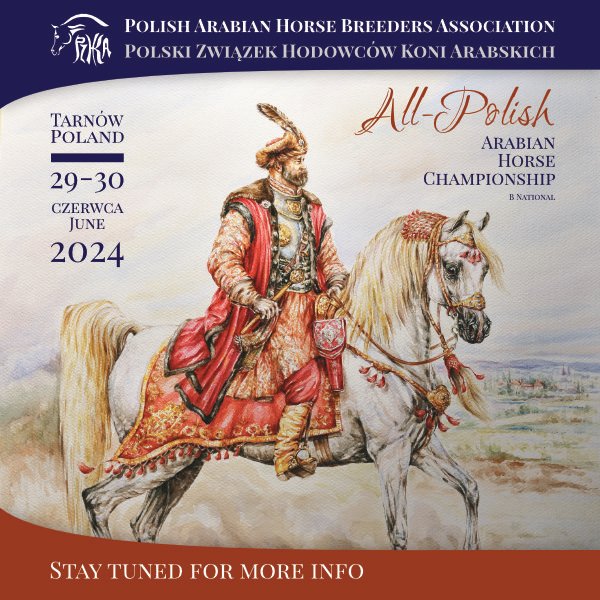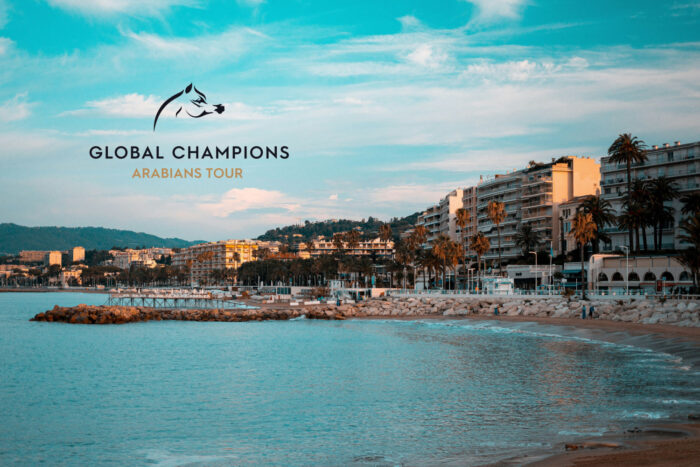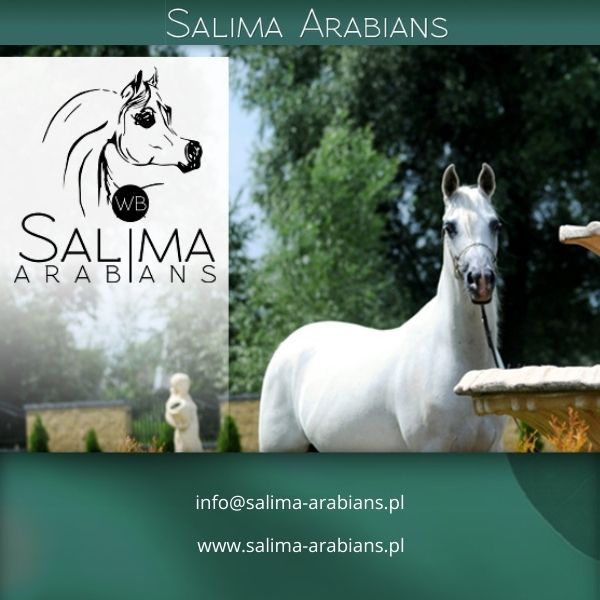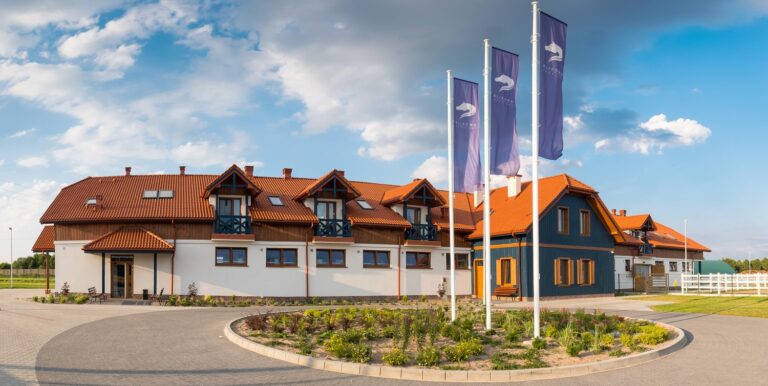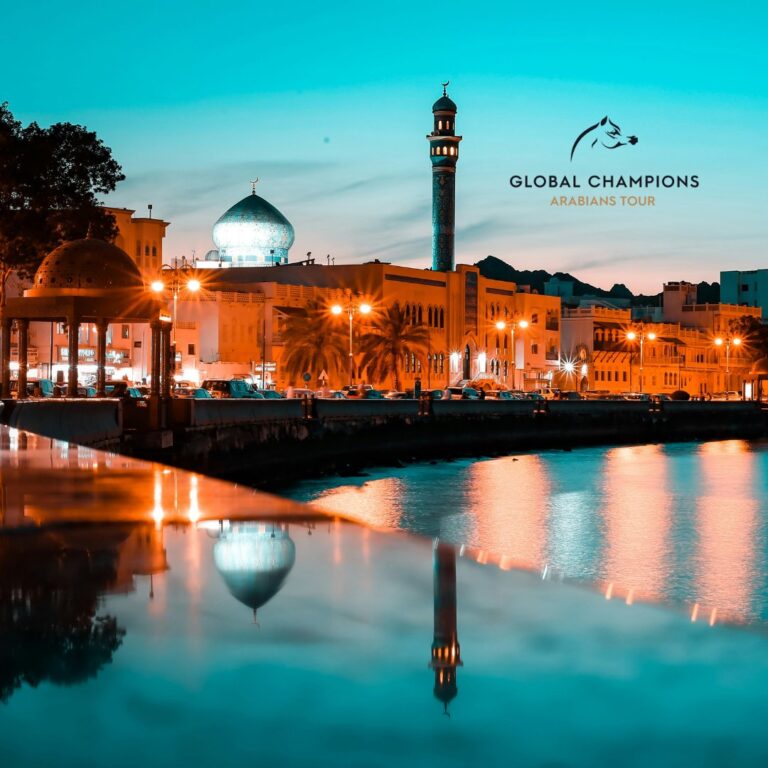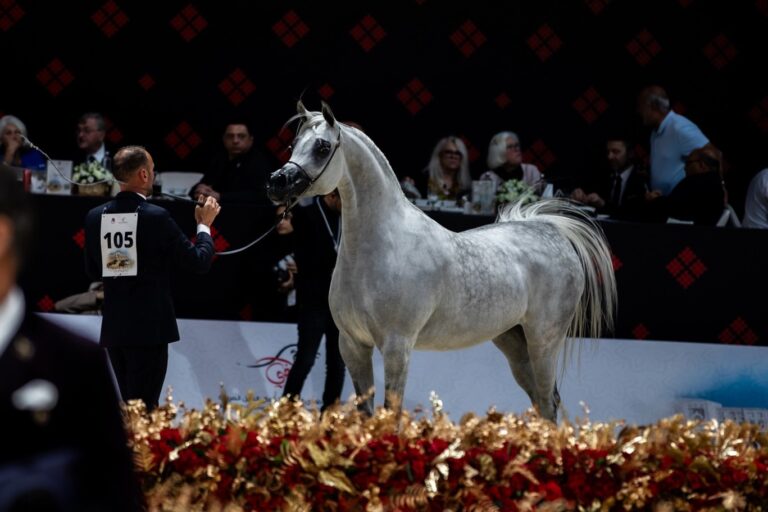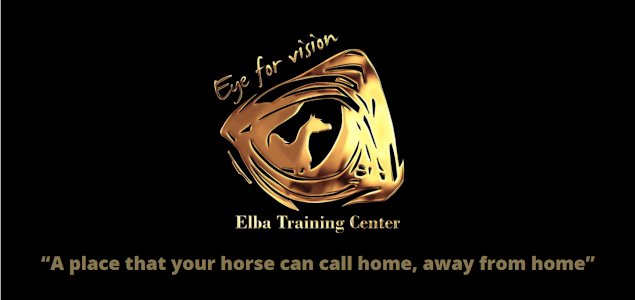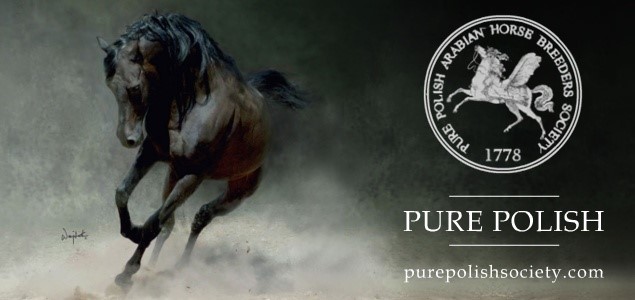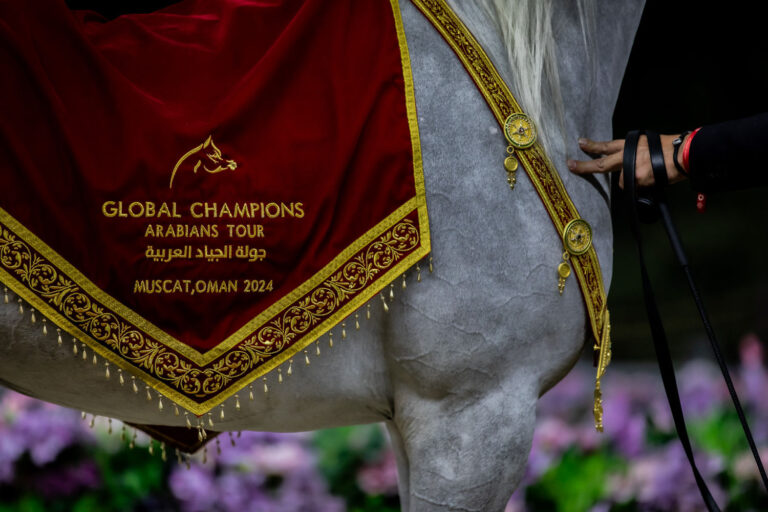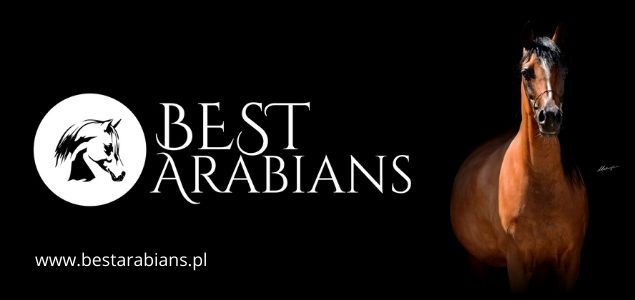All those who follow the Global Champions Arabians Tour – both live and online – have most probably already got used to the panache and splendour of this series of events dedicated to purebred horses. It was no different in Muscat, the capital of Oman, where the third Arab stage of GCAT took place a week ago. Although considerably smaller than previous events in Doha and Abu Dhabi, its organisers did not disappoint in terms of either the quality of the horses or the bedazzling entourage. How did Arabian horse lovers spend their Easter weekend in the green gardens of the Al Bustan Palace hotel? Let us find out.
An ethnographic feast
There can be no doubt that Global Champions Arabians Tour Muscat was an event to remember for those present at the Omani stage. From the very beginning, the organisers promised that horses would be promoted equally to the cultures and traditions of the countries hosting each stage. Thus far, they have managed to make a huge impression on the international community, as both previous incarnations and the one in Muscat were extremely spectacular. Moreover, the hosts of subsequent editions seem to be trying to outdo each other to see which event ends up being the most diverse and authentic. And despite the noticeable grandeur, GCAT has so far stayed truthful to the highest standards and creativity.
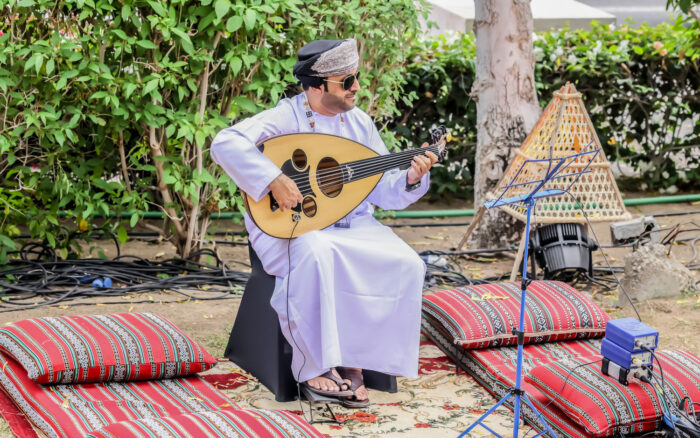
From a European perspective, the countries of the Arabian Peninsula differ little from each other. Traditions, customs, culture, art, cuisine – under the influence of the common denominator: language and religion – seem to merge into one entity. However, this impression is unjust and unfair. One might as well venture to say that the countries of former Yugoslavia or Czechoslovakia are not much different from one another. For this reason, the background against which the horses were presented in Qatar, the United Arab Emirates and, most recently, Oman, was far more exposed than usual.
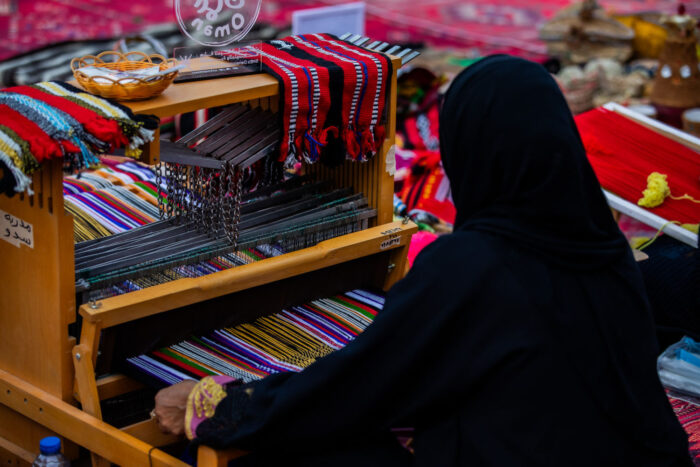
Visitors to the Al Bustan Hotel who came to see the horse show, of whom there were over 5,200 at GCAT Oman, met masters of traditional Omani handicrafts in the hotel gardens. Before their eyes, chefs were preparing dishes typical of Omani cuisine from locally sourced products, a chamber orchestra was playing on instruments both well-known such as the harp or cello, and exotic to European eyes like the qanun and oud, performing Arabic melodies from the Gulf of Oman, while artisans were mesmerising the visitors with their talents. Basketry, carpet weaving, calligraphy, artistic pottery – it might have been a horse show, but at the same time an ethnographic feast for the senses.
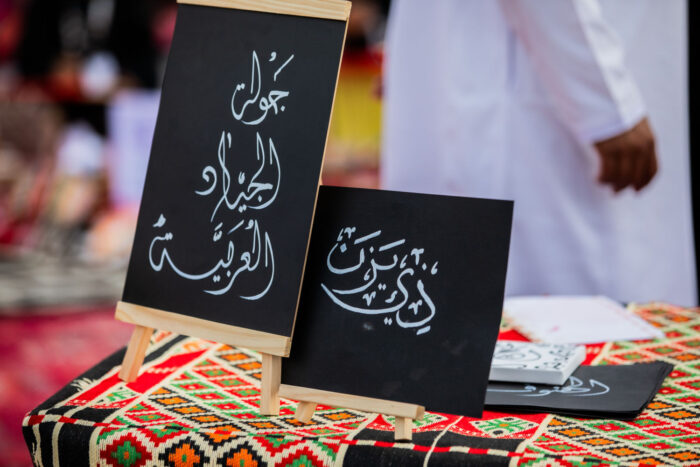
It is impossible not to ask ourselves what we will see in the background of the European stages of the Global Champions Arabians Tour, the first of which will take place in the first half of June. What will the organisers surprise us with on the northern coast of the Mediterranean Sea in Cannes, the French capital of European cinema? What will await us a month later in the Dutch city of Valkenswaard, the North Brabantian capital of falconry? There is no denying that the task facing the French, Dutch and Italians is quite a challenge indeed…
Poland takes silver
GCAT Muscat began and ended, just like the previous stages of the Global Champions Arabians Tour, with ceremonies especially prepared for this occasion. In Muscat, a total of 130 artists, including the band of the Royal Guard of Oman and a group of equestriennes in traditional Arabic costumes, welcomed and bade farewell to guests gathered in the VIP tents and in the gardens of Al Bustan. And the horses – although there were no major surprises in the final rankings – delighted all who had the chance to marvel at their beauty.
Over the course of three days, 97 horses from seven countries, including horses bred in Poland, were judged by nine judges randomly selected from a 20-person panel. In one of the 2-year-old colt classes, you could spot a grey colt Eragon Zalia (EKS Farajj – Empirica by Złoty Medal) bred by Zalia Arabians, and among senior mares – the Michałów-bred Emarella (Sahm El Arab – Emandorella by Eden C). We shall talk about her a little more later. While the number of horses was not record-breaking, the total prize fund for the top ten horses of the Muscat leg of GCAT was without precedent: €1,050,000 – over one million euros. Never before had there been a higher prize pool at any Arabian horse show in Oman, so obviously a lot was at stake.
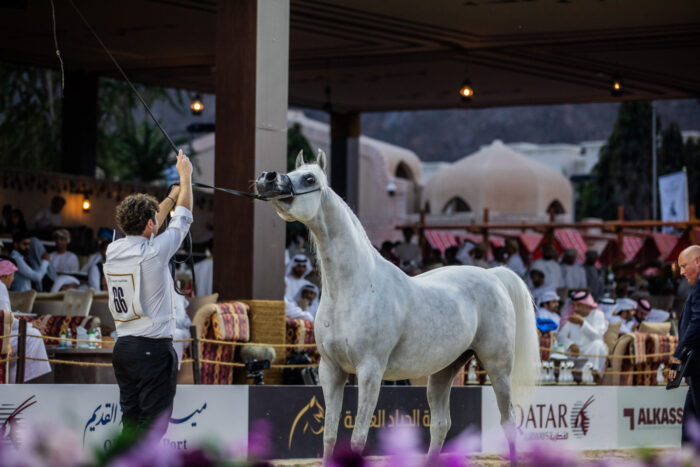
For this reason, the competition was very fierce at times, especially when the horses at the top of the rankings fought to maintain their positions from Doha and Abu Dhabi. After all, the winners of the male and female rankings, or rather their owners to be precise, will return home at the beginning of December a million euro richer. So let us take a look at the championships. From the top, shall we?
There was no surprise in the yearling mare championship. The still undefeated grey D Nafayes (D Seraj – D Danat by SG Labib) easily won the gold medal for Dubai Arabian Horse Stud – third time in a row, as she had previously scored gold in both Doha and Abu Dhabi. Currently having 60 points in the mares’ ranking, she is in second place, losing mere championship points to the leader. The silver medal went to the bay Sultana Al Thamer (Dominic M – Weaam Al Jassim by Emerald J) from Al Thamer Stud (fifth in the ranking), and the bronze to the chestnut D Rowa (FA El Rasheem – D Rawyanah), also from Dubai Arabian Horse Stud.
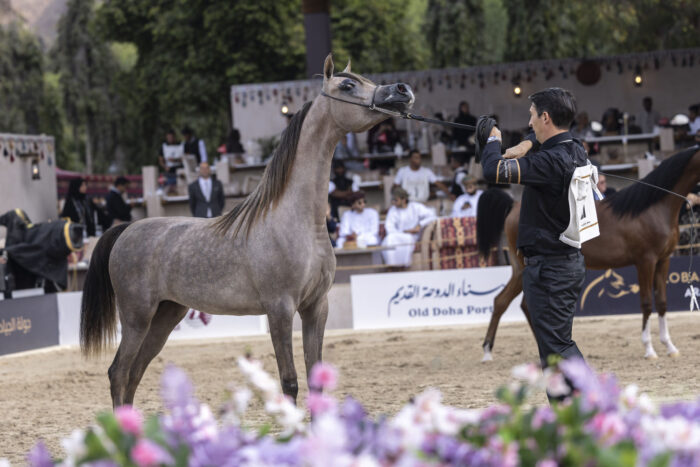
In the yearling stallions, one of the medal places also went to one of the crowd favourites. Having won the silver medal in Qatar and the gold medal in the UAE, the bay colt D Borkan (FA El Rasheem – D Ajayeb by RFI Farid), the leader of the stallions’ ranking, won his second silver, which allowed him to stay in the lead, although only with a slight five-point advantage. The grey Afreen Al Shaqab (D Mezyan – Siwar Al Shaqab by SMA Magic One) from Al Shaqab Stud received gold, which gave him sixth place in the ranking, and the bronze medal went to the bay Easar Alwajba (AJ Radman – LR Altagracia by Excalibur EA) from Al Wajba Stud, fourth now with a slight advantage in the male ranking.
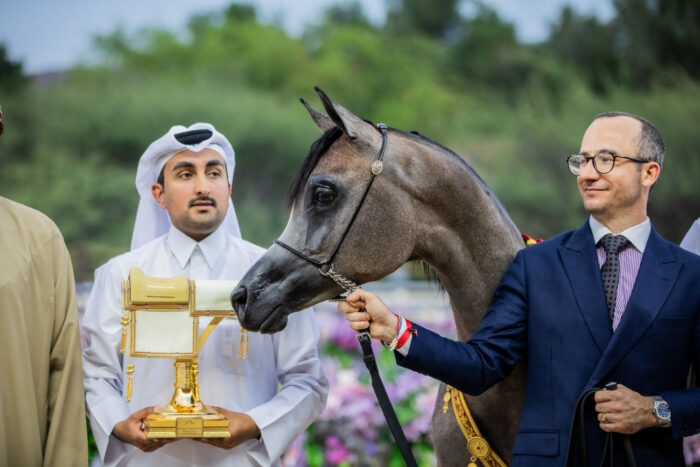
In the junior mares category, the medals went to contestants from the first ten places in the ranking. The Brazilian-bred chestnut Shahabrys HVP (Royal Asad – Rebecca HVP by Magnum Chall HVP) from Agropecuaria Vila Dos Pinheiros representing Saudi Arabia and Ajmal Stud took gold. The gold medallist from Abu Dhabi, the grey D Najlah (D Seraj – Elle Flamenca by Ajman Moniscione) from Dubai Arabian Horse Stud won silver, while the silver medallist from Abu Dhabi, originally from Brazil and representing Qatar and Al Jumail Stud, also grey TM Bella (TM Itaipu – TM Fahdeelah by Shanghai EA) scored bronze. Ultimately, they take the fourth, third and sixth places in the Female Top 20, with less than 10 points separating them.
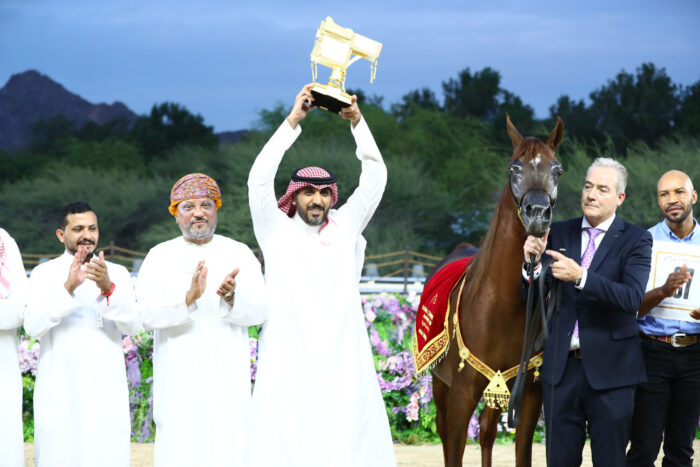
In the junior stallion championship, the first two places went to crowd favourites. The grey Bandar Aljassimya (Picasso Di Mar – Miznat Aljassimya by Monther Al Naser) from Aljassimya Farm repeated his success from Katara International Arabian Horse Festival. The second silver after Abu Dhabi went to the bay D Shakhar (D Shakhat – D Shamkah by FA El Rasheem) from Dubai Arabian Horse Stud (he won the bronze medal in Doha). The bronze, in turn, was won by the chestnut Hamed Sarm (Royal Asad – Treasure AS by Titan AS), making a glorious GCAT debut, which came as no surprise to observant viewers. This was his third medal this season after the gold at the Prince Sultan bin Abdulaziz International Arabian Horse Festival and the silver at the Dubai International Arabian Horse Championship. How did this affect the stallion ranking? The first two places in this championship are currently seventh and second, with as few as nine points separating them.
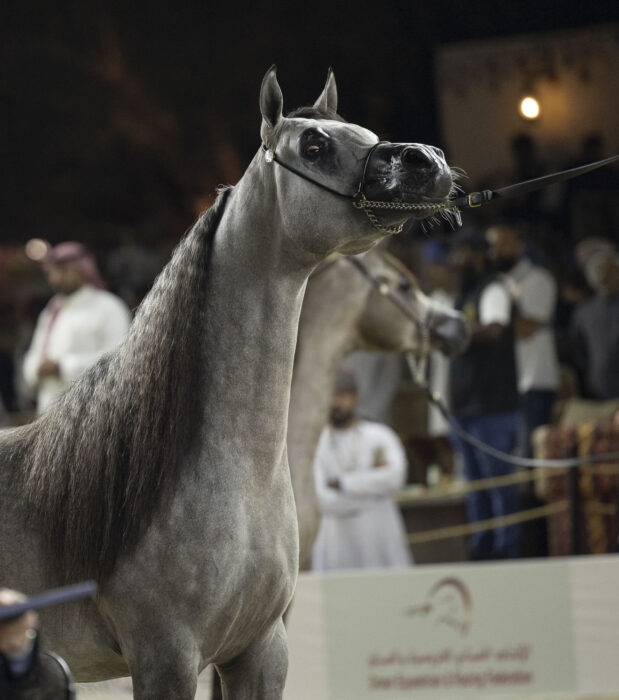
While exciting for Polish audiences, there was no surprise in the battle for senior mare championship titles. For the third time in a row, scoring a hat-trick, the unrivalled AJ Kayya (AJ Kafu – AJA Caprice by EKS Alihandro) from Ajman Stud was best and won gold. She remains thus far the undisputed leader of the mares’ ranking. Currently ninth in the ranking, the grey Emarella from Michałów Stud in Poland won her second medal in this year’s GCAT series, this time silver, improving her result from Doha, but she loses almost half the points to the leader. The bronze medal went to the bay Alexandra RC (FA El Rasheem – Amabelle by Ajman Moniscione) who debuted in Muscat at GCAT representing the Royal Cavalry of Oman.
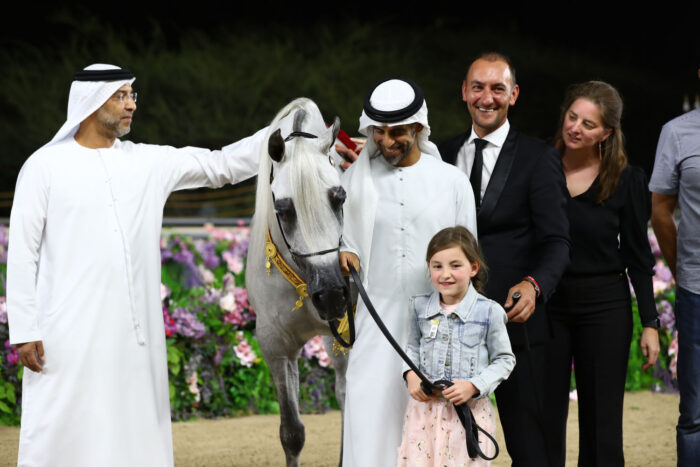
The senior stallion championship was once again a clash of the titans. Rivals from Doha met in the ring: the grey ES Harir (AJ Dinar – TF Magnums Magic by Magnum Psyche) from Aljassimya Farm and the bay Rhan Al Shahania (Marwan Al Shaqab – Jwaheer Al Shahania by FA El Rasheem) representing Al Shahania Stud. In Qatar they won the first and third places, and in Muscat – gold and silver medals. There was also a fight for the bronze medal, which ultimately went to the grandson of Kwestura, the grey AJ Kafu (Shanghai EA – AJ Kahayla by QR Marc) from Ajman Stud, who triumphed in Abu Dhabi winning there the gold medal. Thus, the medallists finished the Arabic part of GCAT in the fifth, eleventh and tenth place.
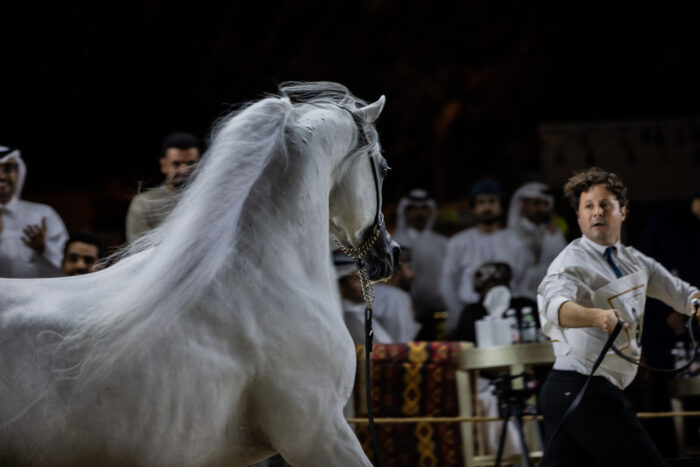
Rankings
After three stages of the Global Champions Arabians Tour, we fully understand the philosophy and nature of this series. The organisers and hosts, including the Oman Equestrian Federation, did their best to delight us, each time refining the formula of the shows and taking care of every, even the smallest, detail – from handicraft, through spectacular illuminations using drones, to the unrestrained excitement from the beginning of individual classes to the very end of the championships.
Will there be voices claiming that some of the championships were predictable? Maybe. The rankings of the twenty best mares and stallions will undoubtedly be shaken by European shows, the culmination of which is to take place in December at the Championnat du monde du cheval arabe, which returns to Paris this year. A lot can happen between now and then.
For the time being, the invincible AJ Kayya is in first place in the ladies’ ranking with 60 points. The second place from the very beginning belongs to D Nafayes – also 60 points, and the third place goes to D Najlah – 54 points. The first two mares in the ranking are triple gold medallists of GCAT 2024, while the third one has two silver medals and one gold.
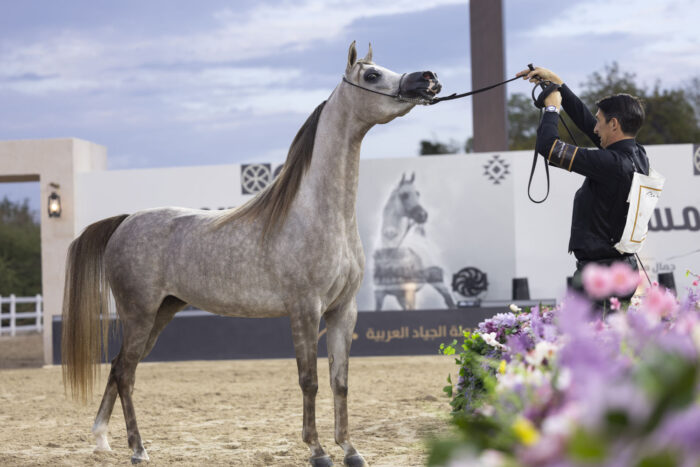
The top of the boys’ ranking is also dominated by horses whose names start with the letter D who won medals every time. D Borkan is in first place since the Abu Dhabi show – 54 points. D Shakhar is second – 49 points, and third is the bay Mushwash Al Shaqab (Haash OSB – Shaikha Al Shaqab by Kahil Al Shaqab), who won medals in Qatar and the Emirates, and was fourth in the yearling championship in Oman.
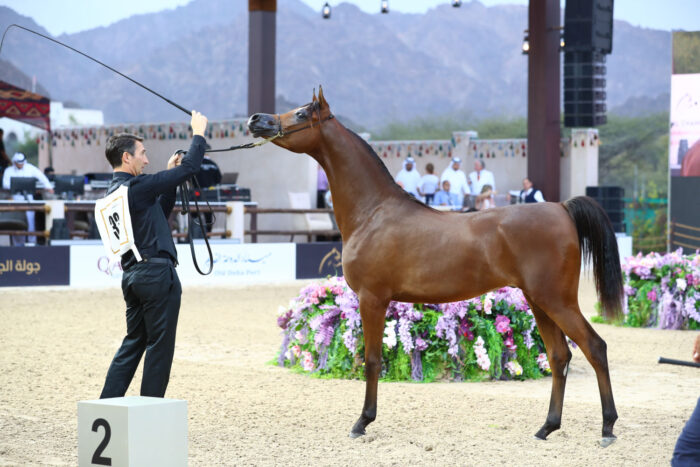
And how have the presenters fared so far? At the top of the third ranking conducted at the Global Champions Arabians Tour, there are three gentlemen who all Arabian horse lovers in Poland know very well. After three GCAT stages, Raphael Curti is in the third place with 133 points, Glenn Schoukens is the runner-up with 22 points more, and Paolo Capecci is in the lead with 168 points. However, it is impossible to predict how the four European events will affect this ranking. God works in mysterious ways, and so do horses.
Next GCAT stop: Cannes. See you in nine weeks on Côte d’Azur.


